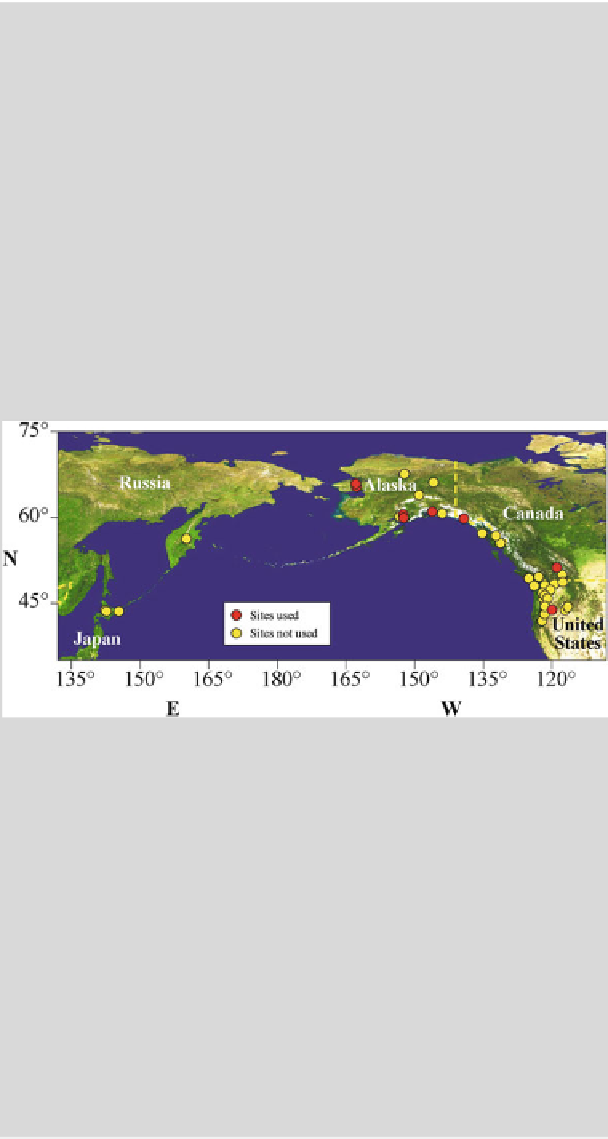Geoscience Reference
In-Depth Information
Box 7.1 Climate signals in Gulf of Alaska tree-ring records
A network of climatically sensitive tree-ring records has been compiled
for the Gulf of Alaska (GOA) region, and the records have been used to
develop time series of temperatures over the past one to two millennia (Box
Pacific Decadal Oscillation (PDO), and the GOA chronologies show evidence
for decadal-scale regime shifts, including the noteworthy 1976 transition in
Pacific climate. These records have been linked to sea surface temperature
(SST) variations in the Pacific and have been included in reconstructions of
lennial temperature variations are evident and are linked to glacial changes in
southern Alaska.
Box Fig. 7.1
Map of North Pacific region showing locations of tree-ring sites (
yellow
)
used as candidate predictors of the tropical Indo-Pacific climate index (NPI). Sites in
red
are those included in the regression model used to reconstruct the NPI. Some dots represent
Analyses of instrumental data demonstrate robust linkages between
decadal-scale North Pacific and tropical Indo-Pacific climatic variability, yet
information on the tropical-high-latitude climate connection is limited prior
to the twentieth century. Gulf of Alaska and western Canadian tree-ring
records were used to reconstruct the December-May North Pacific index
(NPI—an index of the atmospheric circulation related to the Aleutian low-
NPI reconstruction shows evidence for the climatic regime shifts seen in the
instrumental NPI data, and for additional events in prior centuries. It correlates
significantly with both instrumental tropical climate indices and a coral-based

